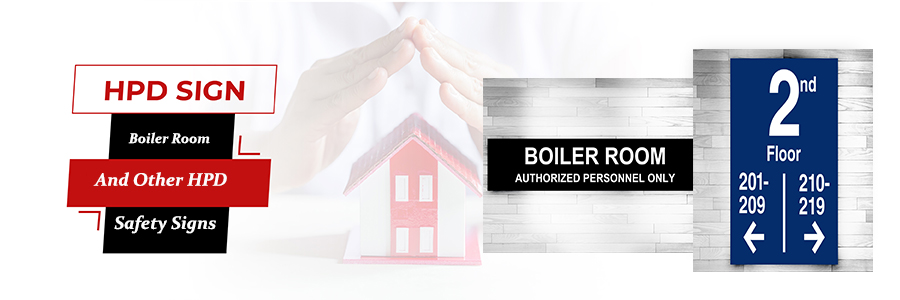A new tenant at your 50 unit property is in the basement looking for the recycling room. Your super and porters recently painted the boiler room door and have yet to re-hang the boiler room door sign. The door to the mechanical room has also been left unlocked after some routine seasonal maintenance. The renter enters what she thinks is the recycling room and fumbles in the dark for a light switch. She reaches out and accidentally scalds her hand on a hot steam pipe, requiring a trip to the emergency room.
As a property owner or manager, taking safety seriously is one of the main reasons to use regulatory signage, such as those required by the New York City Department of Housing Preservation and Development (NYC HPD). The last thing you want is for the unthinkable to happen to one of your tenants or their guests. Even a minor injury that could have been avoided with the proper signage will not only make you feel terrible, but it can also hurt you both financially and legally. Failure to hang a boiler room door sign which results in injury may not only result in a lawsuit — it will also land you in hot water with HPD, as well as the NYC Department of Buildings (NYC DOB) and even the New York City Fire Department (FDNY).
Safety First
There are many types of required HPD signage but in this blog, we will be specifically focusing on those that help to ensure the safety and well-being of tenants, guests and employees — as well as allow repairs and annual inspections to be done more quickly and efficiently. With the exception of certain framed paper notices such as inspection cards, HPD signs must usually be made of durable, heat-resistant materials such as aluminum.
Boiler Room Signs
Owners of both commercial and residential properties are required to post at least three different types of boiler room signs: the Boiler Room Door Sign, the Keys to Boiler Room Sign and the Emergency Shut-off Switch Sign.
Additional Heating System Signs
If the building produces its own steam — rather than receives steam from Con Edison as many buildings in Manhattan and Downtown Brooklyn do — it requires a Boiler Manufacturer Sign. If the property uses fuel oil, it will also need a Tank Capacity Sign:
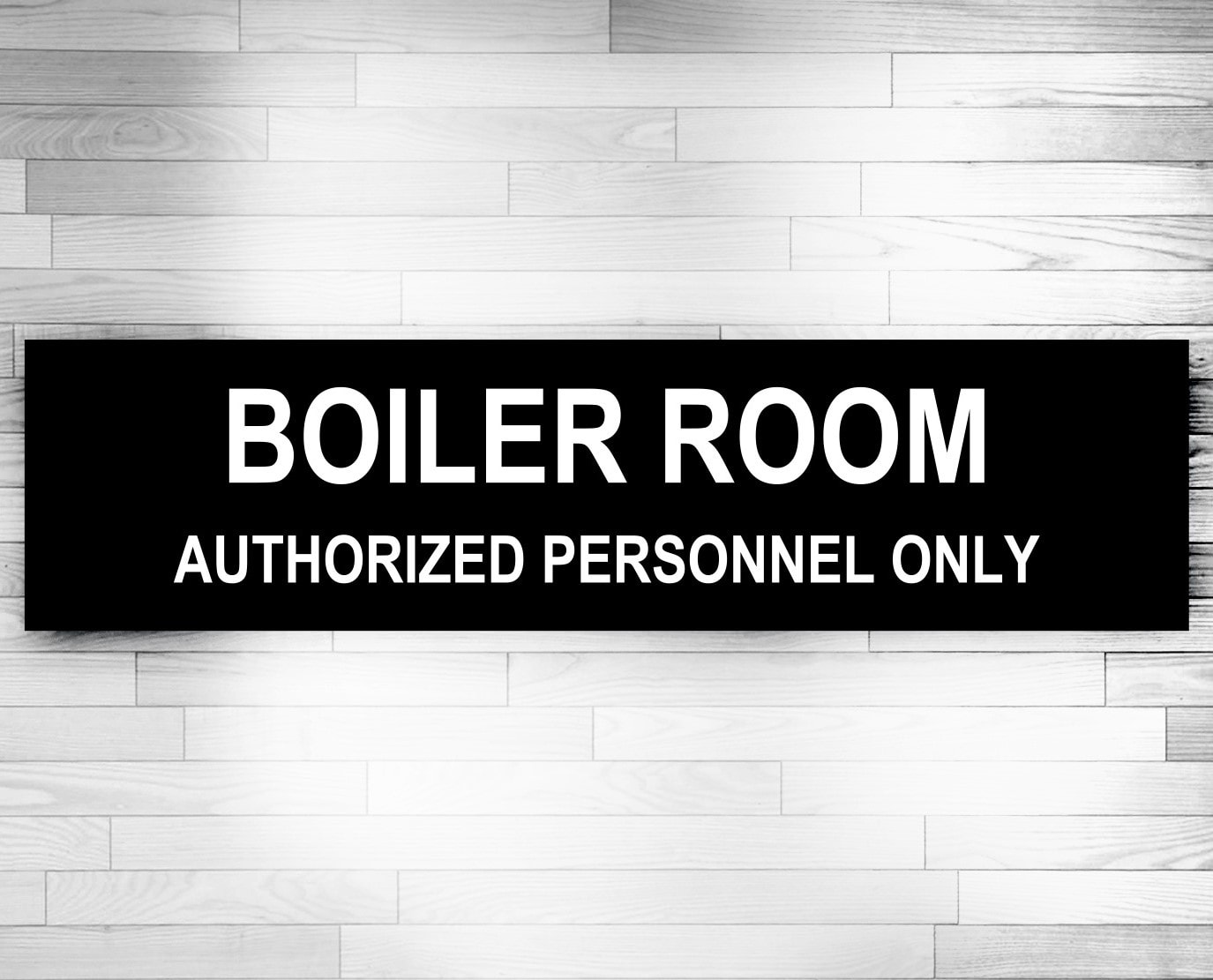
- Boiler Room Door Sign – this sign will inform tenants, repair and fire department personnel where the boiler, furnace and/ or other building mechanicals are located. It will range in size from 3” x 12” to 14” x 10” depending on how large the door is. It will typically feature white letters in a plain typeface over a red background which state:
BOILER ROOM
No Storage Permitted
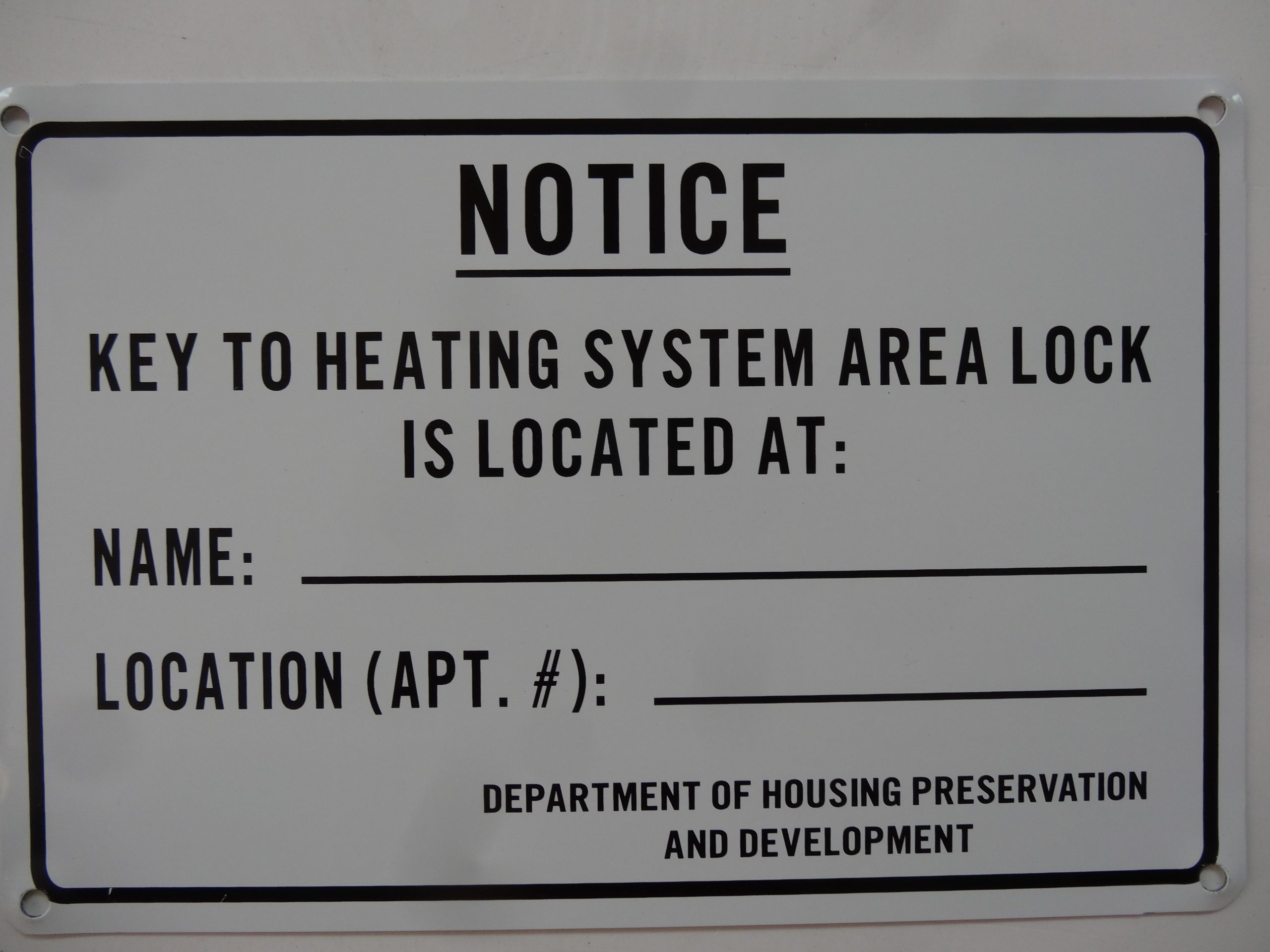
- Keys to Boiler Room Sign – this sign must be hung both in the building lobby and near the boiler room. It tells the reader who has the keys needed in order to access the boiler room during emergencies, heat outages and regular inspections. It is commonly 7” x 8.5” and will often feature plain black letters on a white background which state:
NOTICE
The Key to the Heating System Area is located at:
Name:
Location (Apt. #):
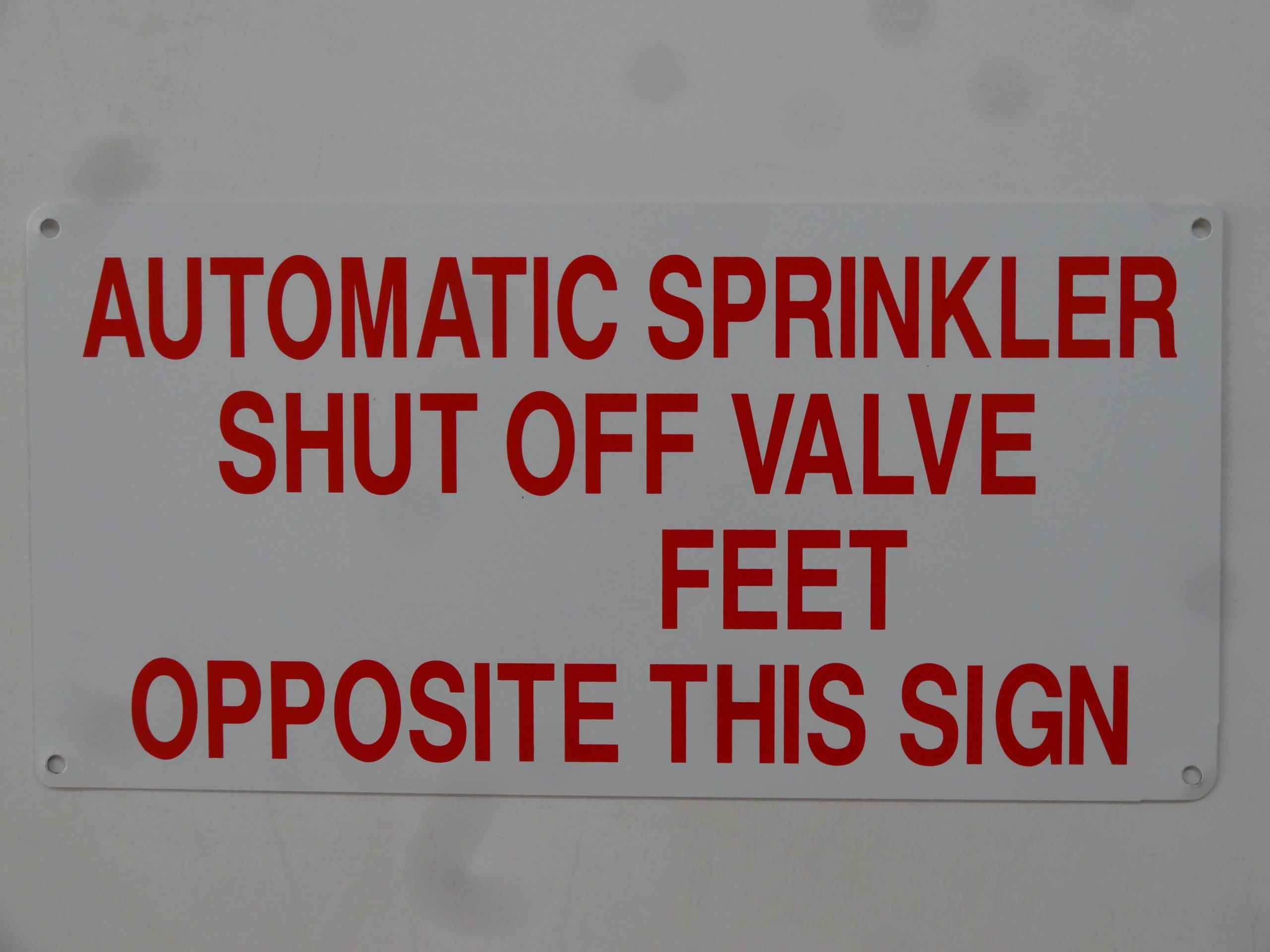
- Emergency Shut-off Switch for Boiler Location Sign – this sign tells city inspectors, gas company repairmen and firefighters where the emergency shut off switch for the boiler is located. This sign is often around 7” x 10” and placed as close to the switch as possible. Printed in plain white letters over a red background, it reads:
BOILER
EMERGENCY
SHUT-OFF
- Boiler Manufacturer Sign – This sign tells inspectors, repair and fire personnel the make of the building’s boiler, which allows them to more easily work with and access different features of that particular model — much like auto mechanics need to know whether they are working on a Toyota or a Chevy. It is often placed somewhere in the mechanicals room in plain view and features white letters over a black background which state “NYC Boiler”, along with the maker’s name and the model’s serial number, for example:
N.Y.C. BOILER
WEIL MCLAIN BOILER
#MD22487-1
- Oil Tank Capacity Sign – this sign is important for fuel oil delivery staff, as well as repairmen and various inspectors. It lists the working capacity of the oil storage tank, as well as the specific type of fuel oil being used. It is normally 10” x 12” and features white lettering on a red background (or vice-versa), which might state:
TANK CAPACITY:
10,000 GALLONS
FUEL: # 4 OIL
Other Important HPD Safety Signage
- Gas Leak Notice or Combined Gas Leak, Carbon Monoxide and Smoke Detector Sign – It is required that landlords post instructions on how to report a suspected gas leak. Recently updated legislation allows building management to post a notice which will also alert tenants to their rights and responsibilities for smoke and carbon monoxide detectors, combining the gas leak notice with other important fire safety information.
A combined gas leak, smoke, and carbon monoxide detector notice
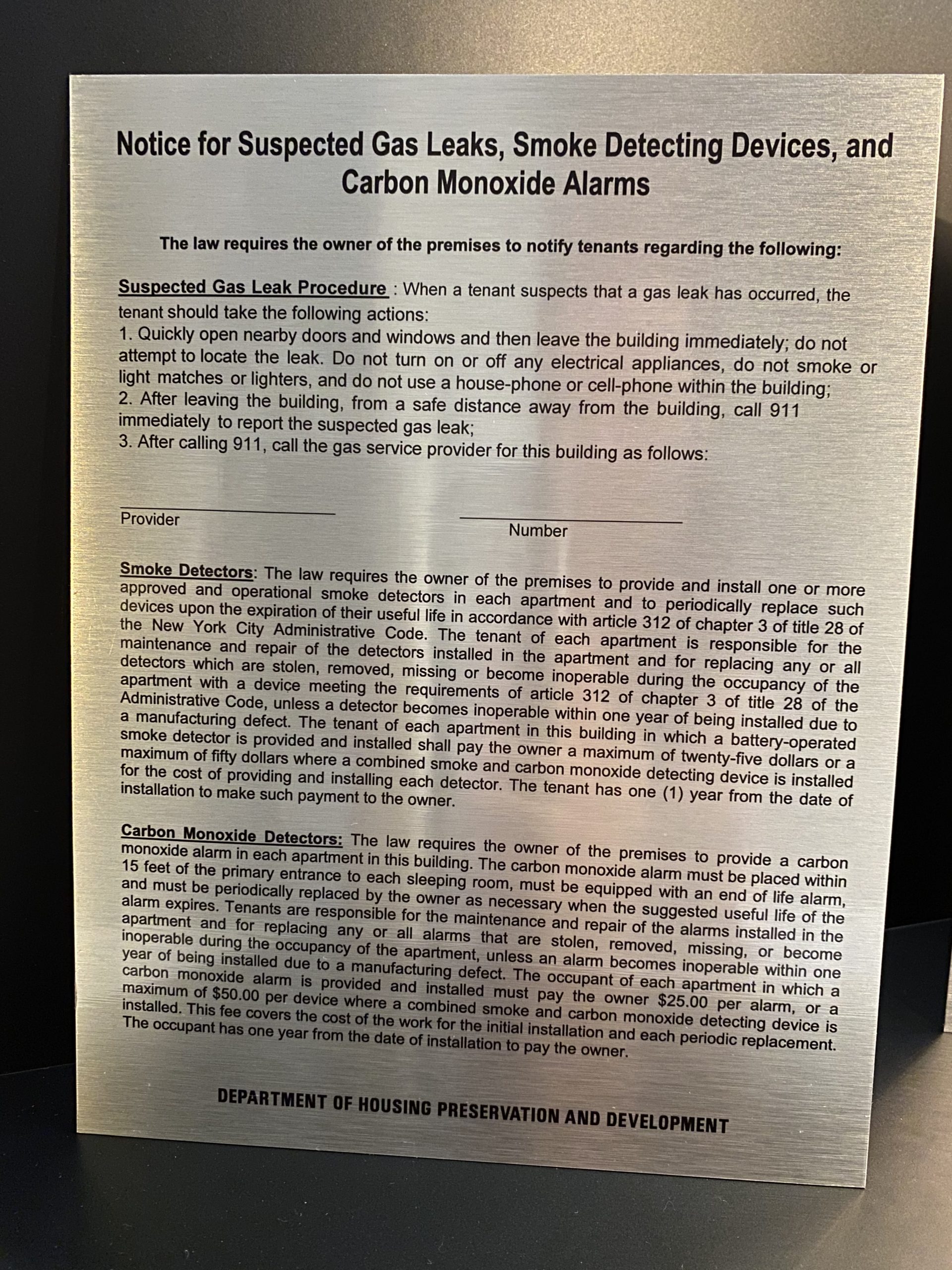
- Fire Safety Notice – It is required that any building with three of more apartments also contain notices instructing tenants on what to do in case of a fire. One notice needs to be posted on the inside of each apartment entrance, as well as displayed in a conspicuous place in the building lobby. There are two different types of these notices depending on the materials a building is constructed of one for combustible (non-fireproof) buildings and one for non-combustible (fireproof) buildings.
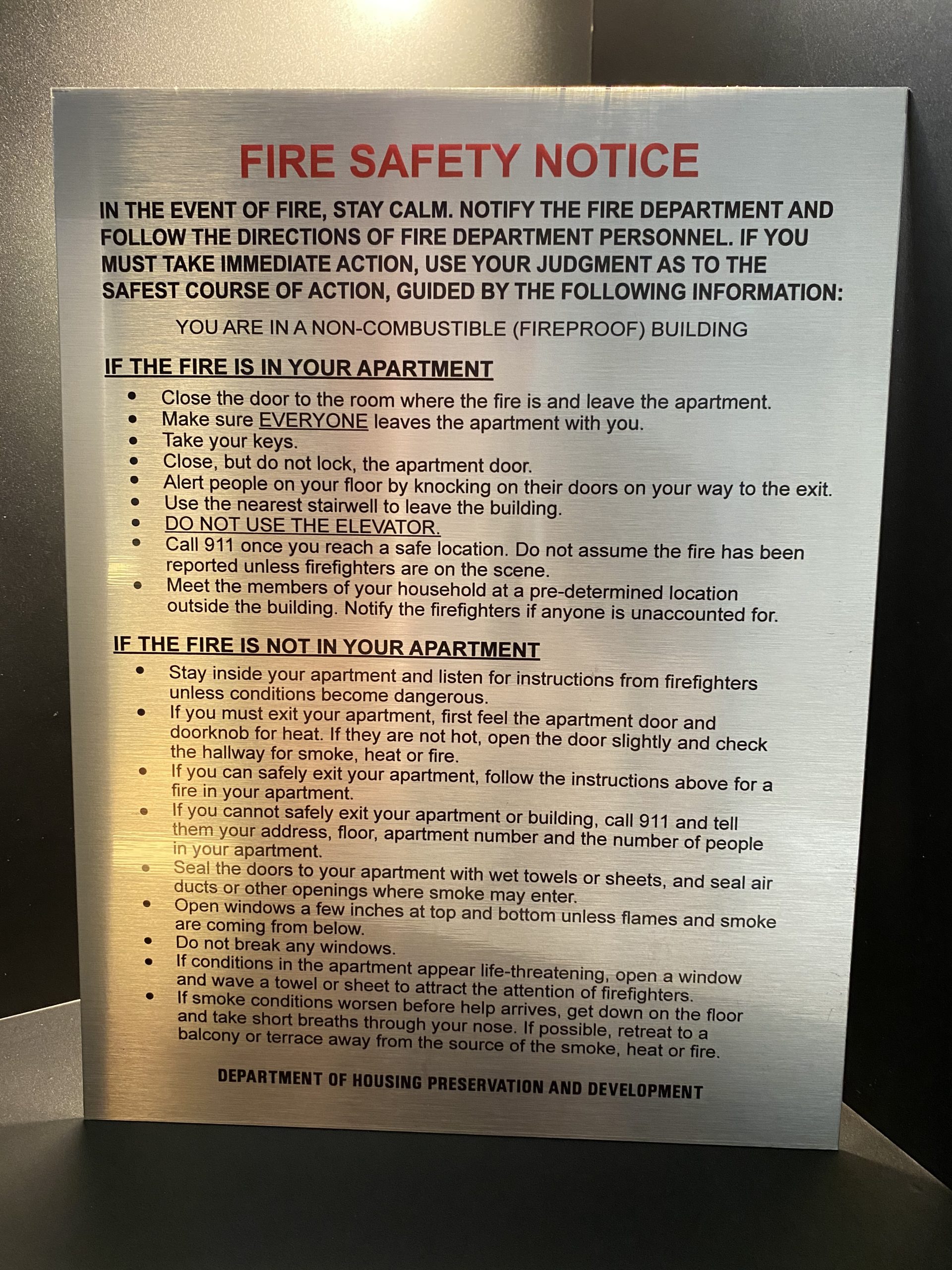
- Building Numbers and Floor Number Signs – Two surprisingly important HPD safety rules are the painting or posting of the building’s address so it is clearly seen from the sidewalk, as well as a floor number on each story of a building that can be viewed from the elevator and/or stairs. This allows police, firefighters, paramedics, and others to respond as quickly as possible to someone in urgent need of help. These signs save lives by saving valuable time.
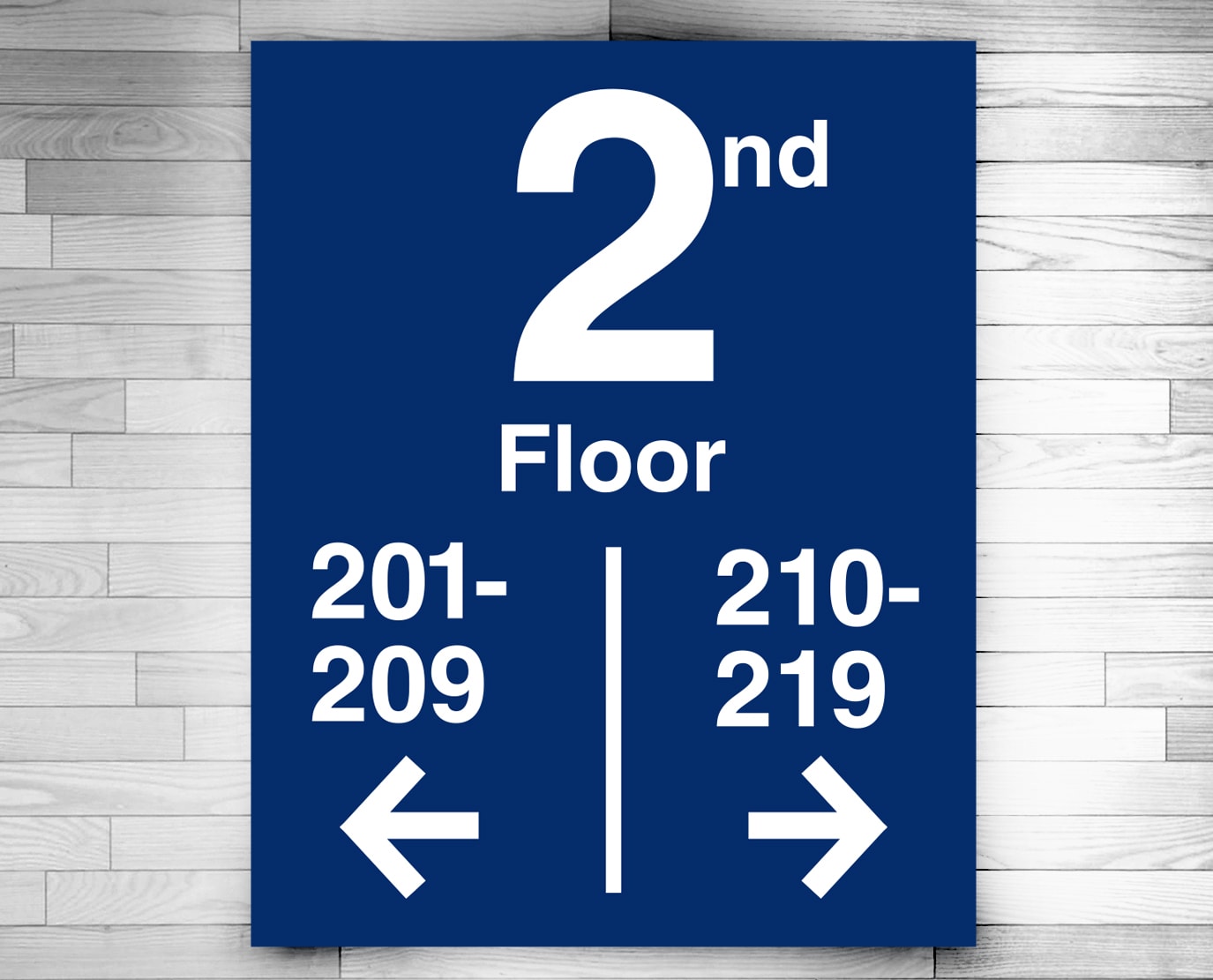
- Disaster Response Signage – Landlords of residential properties where the owner or owner’s family does not live are required to post an Emergency Notification prior to the arrival of a weather emergency, after a natural disaster, and after being informed that a utility outage will last for more than 24 hours.
A checklist meant to prepare landlords for a natural disaster or another emergency
- Protect Your Child from Lead Poisoning and Window Falls Annual Notice – while NYC is one of the safest places in the U.S. for a child to reach maturity there are still certain dangers inherent to an urban environment with older housing stock. If your building was built prior to 1978 it is assumed to have lead paint, requiring older layers to be kept carefully sealed in by fresh paint. Window falls by small children are another common hazard in taller residential structures.
This combined notice warns tenants about the dangers of lead poisoning, as well as informs them about their rights to request window guards if a child under 11 lives there. The notice must be filled out by tenants and returned. If it is not, landlords are required to physically inspect the apartment to see if a child under six lives there.
Questions? Contact Brooklyn Signs Today
At Brooklyn Signs, we’ve been providing all types of residential and commercial signage to NYC for decades. That means if you have questions about HPD, FDNY, DOB, DSNY notices or any other type of building management signs, including recycling signs — then we have the answers. Get in touch with us today.

